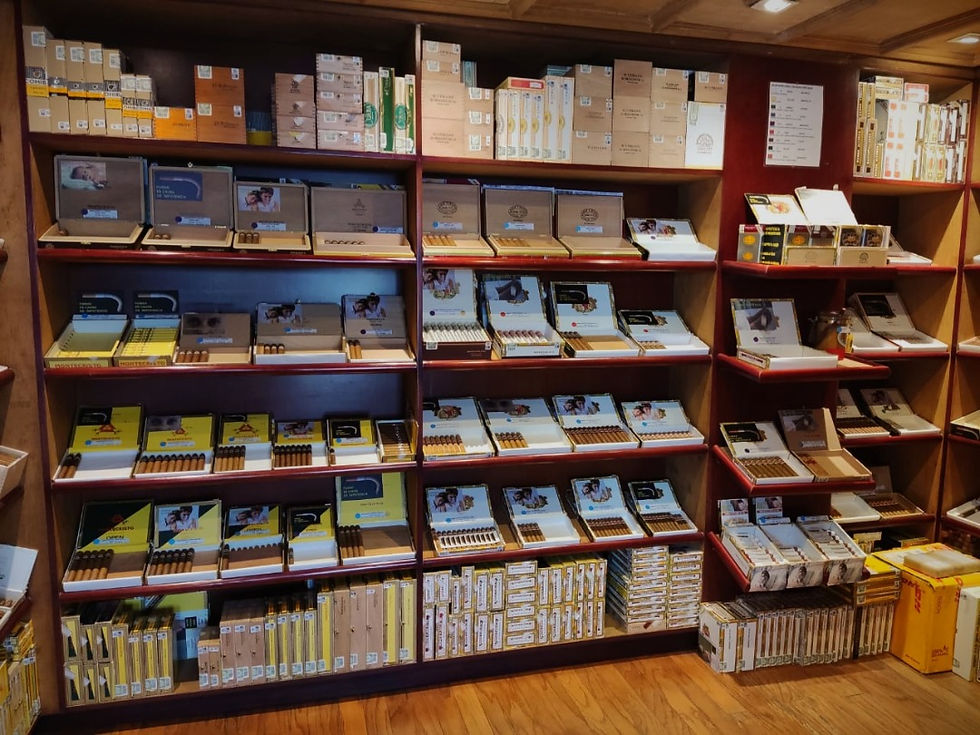Choosing the “Right”Cigar Every Time
- Gerry C.
- Jul 9, 2022
- 3 min read
Steer clear of the common cigar myths and learn the fine points of selecting the perfect smoke. By Gerry Cohen

Choosing the “right” cigar to smoke can be an overwhelming endeavor.
The first step begins with independent research: cigar magazines, newsletters, websites, or perhaps even one of those books for dummies. Of course, one of the most underutilized sources of great cigar information is your local tobacconist. Asking some basic questions such as what cigars are smoking well and if any special releases have captured the spotlight for the moment is a good place to start. After all, they are the great sounding board of cigar praises as well as complaints.
Before selecting your cigar, consider the amount of time you’ve allotted yourself. If you have a free hour, then feel free to indulge in a torpedo or Churchill; if time is not on your side, then you might want to look for something smaller such as a petite corona. Finishing your cigar in one sitting is what a cigar was designed for; tossing away a half-smoke one hurts, and re-lighting it later for a second smoking can work, technically speaking, but most likely it will taste acrid and bitter. If you insist, improve the second lighting experience by completely cutting the ash from the foot of the cigar. Ash requires an extreme amount of heat to get burning again, which would invariably char and destroy the more delicate cigar wrapper and filler leaves. But don’t stop there: flip the cigar around and cut 1/4–1/2 inches off the head before relighting. The leaf cap that adorns the cigar’s head acts as like a filter that traps some of the charred residues, which don’t taste good to begin with. Clipping off a portion of the head will get rid of some of these offensive residues from the first smoking. Do this only if you have to, as the goal should be to finish your cigar in one comfortable sitting.

The length of the cigar and its girth (or ring gauge) is collectively referred to as the vitola. It’s important to remember that you will need to adjust how much effort you use to draw smoke
through the cigar as the ring gauge selection becomes bigger or smaller. If you normally smoke big cigars and use strong, deliberate draws, but are now smoking a panatela or corona, you have to draw with less force or you’ll cause the smaller cigar to overheat and lose out on the cigar’s subtle flavors.
You will also need to choose from a wide variety of cigar wrappers. There are numerous types, ranging in color from green (candela, double claro, AMS), natural (claro), Colorado claro (natural with a reddish tint), medium brown (EMS), reddish (Rosado), dark brown (maduro meaning aged or matured), and the almost jet-black wrapper, known as “oscuro” or “double maduro.”
Many American cigar smokers prefer the darker maduro wrapper leaf to the natural as they think the darker wrapper means a stronger smoke; this isn’t necessarily true. Each of the component parts of a cigar wrapper, binder, and the three filler leaves (vola-
do for flavor, ligero for strength, and seco for combustion) go through the process of fermentation. After the green tobacco leaves have been removed from the plants, they are sorted, strung tasting, but only marginally stronger.
Another equally important criterion for good cigar selection is what the wrapper looks like with respect to its texture. Look for blemishes, pronounced veins, oily or dry blotches, color variation, holes or tears in the wrapper, or other imperfections which might give a visual clue as to that stogie’s taste. Choose the best looking cigar in the humidor.
Smoke Primer - Summer 2008


Comments